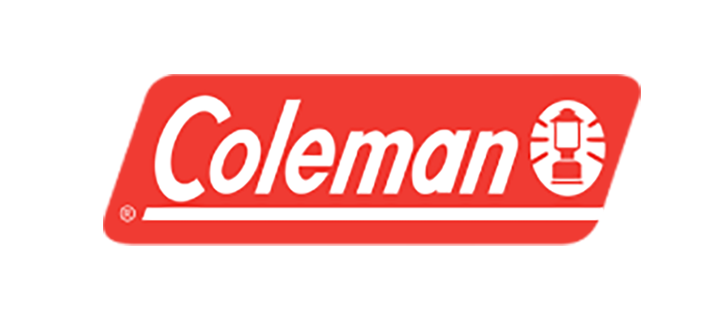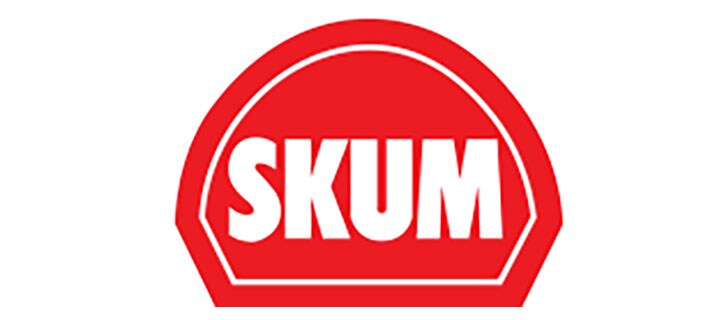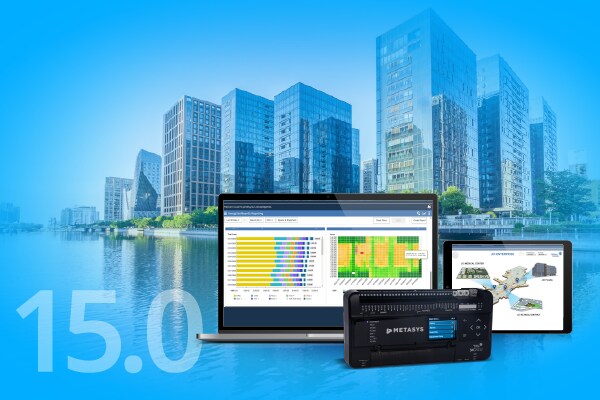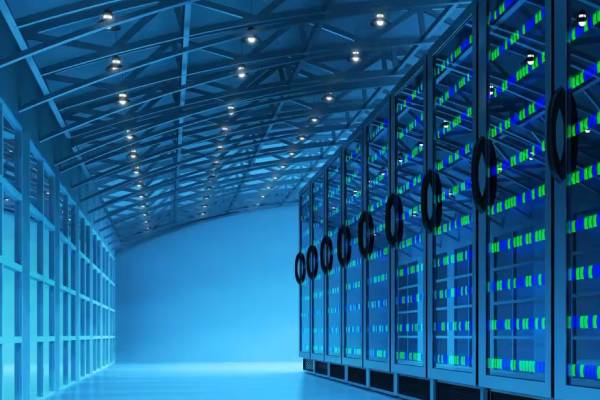- Johnson Controls
- Events
- Webinars
- Heat Pumps: The Game-changer for Better Efficiencies and Sustainability
Heat Pumps: The Game-changer for Better Efficiencies and Sustainability
Improving energy efficiency
With the current trend towards improving energy efficiency through cooling and heating enhancement, our industry experts will share insights about the pivotal role of industrial heat pumps driving energy conservation and decarbonization.
Resources
Access the presentation deck here for free to begin your journey with heat pumps today.
Download Now 
Q&A from participants
1. Can you give examples on the emission reduction potential of this technology and its cost?
The extent of CO2 emission reduction achieved with heat pumps compared to boilers depends on factors such as heating capacity, operating hours, hot water temperature, and the type of boiler fuel used. Due to the inherently high efficiency or high heating COP of heat pumps, there is always a reduction in CO2 emissions. On average, using heat pumps for heating can reduce CO2 emissions by 30% to 85% compared to fossil fuel boilers. As carbon taxes increase, companies are incentivized to lower their CO2 emissions. Additionally, using heat pumps can reduce customers' operating costs by 30% to 70%.
2. What are the types of heat pump compressors?
Depending on the heat source (cooling water) and the heat sink (hot water temperature) required for the heat pump, we can select different compressors for different lift (compression ratio) applications. For small lifts, we can select scroll, screw and single stage centrifugal heat pump, while for larger lifts we can utilise two-stage centrifugal, high pressure screw and high pressure reciprocating compressors for this application.
3. What are the potential financial incentives or payback periods associated with adopting these cutting-edge heat pump strategies?
A payback period of 1.5 to 6 years can be expected depending on the heating capacity, hot water temperature, operating hours, the types of heat pump and waste heat source, and the boiler fuel for the existing boiler.
4. What is the cost of Technology - Investment and Operating cost for some Industrial use cases.
In our on-demand webinar, we discuss NH₃ heat pump investment costs for high-temperature hot water up to 90°C. We also explore their payback period, typically ranging from 3 to 5 years due to cost savings compared to boiler fuel.
5. Could you share real life application examples in maximizing the usage of heat pumps and how?
In the webinar, we have illustrated a few case studies from Southeast Asia to showcase the energy savings and CO2 reduction. You can watch the webinar on-demand now!
6. What is the efficiency of prevailing commercially available heat pumps?
The heat pump coefficient of performance (COP) ranges from 2 to 6. It depends on factors such as waste heat source temperature (air or cooling tower water), desired hot water temperature, compressor type, and refrigerant used.
7. How to adjust heat pump optimisation?
To optimise the COP of a heat pump, we select the appropriate hot water temperature and utilise variable frequency drive (VFD) operation for good part-load performance. Additionally, using a higher waste heat source (such as cooling tower water instead of low-temperature cooling water) can increase the COP.
8. What is the % increase in efficiency in using heat pumps vs boilers?
Compared to boiler efficiency to heat water, heat pump efficiency is minimum 2 to 4 time mores, depending on the cooling water temperature and the hot water temperature to be generated.
9. What are the pros and cons to integrate heat pumps in tropical countries like Singapore?
"Pros: You can get to save boiler fuel cost (LNG or steam cost) by adopting heat pump to generate hot water. Additionally, you can reduce carbon emissions by adopting heat pumps, and save water by using heat recovery from your cooling tower and condenser.
Cons: You would need to upgrade your existing steam heating system design to hot water with heat pump, especially those using steam heating coil to your water tank or hot water bath. As with most other switches, there is an investment cost to integrate to heat pumps, but thanks to the high energy efficiency (COP>1) the payback period is much shorter."
10. Are heat pumps commonly used in Singapore? If yes, can you share examples?
Air-to-Water heat pumps have been commonly used in Singapore commercial buildings such as hotel and hospitals, where hot water up to 60C is required.
11. How are inverters applied on heat pumps and what are their limitations? What are the limited criteria capacities for both hot & cool side usage?
Just like chillers with VFD application, heat pumps can also be applied using VFD technology on the compressor motor. As long as the 'operational temperature lift' of the system does not go over that of the heat pump design lift, we should not have an issue to run the heat pump in part load manner. For the limited criteria, we have covered this in our webinar which is now available to watch on-demand.
12. What are the key nuances of deploying these technologies in different countries in Asia and what are some of the case studies?
In our webinar we walk you through different case studies in Asian countries. Across different F&B industries there are very interesting paybacks on the investment in heat pumps to conduct hot water generation instead of boilers, where we observe significant boiler fuel cost savings vs. electric heat pumps. The webinar is now available to watch on-demand.
13. In commercial buildings, aside from recovering the heat for the hot water system, what are the other possible end-uses?
Other possible uses include but not limited to laundry and AHU RH control where hot steam or hot water is required.
14. Are heat pumps good for climate change?
Heat Pumps are a low carbon heating solution compared to boilers. So yes, their usage is essential in decarbonization strategies.
The extent of CO2 emission reduction achieved with heat pumps compared to boilers depends on factors such as heating capacity, operating hours, hot water temperature, and the type of boiler fuel used. Due to the inherently high efficiency or high heating COP of heat pumps, there is always a reduction in CO2 emissions. On average, using heat pumps for heating can reduce CO2 emissions by 30% to 85% compared to fossil fuel boilers. As carbon taxes increase, companies are incentivized to lower their CO2 emissions. Additionally, using heat pumps can reduce customers' operating costs by 30% to 70%.
2. What are the types of heat pump compressors?
Depending on the heat source (cooling water) and the heat sink (hot water temperature) required for the heat pump, we can select different compressors for different lift (compression ratio) applications. For small lifts, we can select scroll, screw and single stage centrifugal heat pump, while for larger lifts we can utilise two-stage centrifugal, high pressure screw and high pressure reciprocating compressors for this application.
3. What are the potential financial incentives or payback periods associated with adopting these cutting-edge heat pump strategies?
A payback period of 1.5 to 6 years can be expected depending on the heating capacity, hot water temperature, operating hours, the types of heat pump and waste heat source, and the boiler fuel for the existing boiler.
4. What is the cost of Technology - Investment and Operating cost for some Industrial use cases.
In our on-demand webinar, we discuss NH₃ heat pump investment costs for high-temperature hot water up to 90°C. We also explore their payback period, typically ranging from 3 to 5 years due to cost savings compared to boiler fuel.
5. Could you share real life application examples in maximizing the usage of heat pumps and how?
In the webinar, we have illustrated a few case studies from Southeast Asia to showcase the energy savings and CO2 reduction. You can watch the webinar on-demand now!
6. What is the efficiency of prevailing commercially available heat pumps?
The heat pump coefficient of performance (COP) ranges from 2 to 6. It depends on factors such as waste heat source temperature (air or cooling tower water), desired hot water temperature, compressor type, and refrigerant used.
7. How to adjust heat pump optimisation?
To optimise the COP of a heat pump, we select the appropriate hot water temperature and utilise variable frequency drive (VFD) operation for good part-load performance. Additionally, using a higher waste heat source (such as cooling tower water instead of low-temperature cooling water) can increase the COP.
8. What is the % increase in efficiency in using heat pumps vs boilers?
Compared to boiler efficiency to heat water, heat pump efficiency is minimum 2 to 4 time mores, depending on the cooling water temperature and the hot water temperature to be generated.
9. What are the pros and cons to integrate heat pumps in tropical countries like Singapore?
"Pros: You can get to save boiler fuel cost (LNG or steam cost) by adopting heat pump to generate hot water. Additionally, you can reduce carbon emissions by adopting heat pumps, and save water by using heat recovery from your cooling tower and condenser.
Cons: You would need to upgrade your existing steam heating system design to hot water with heat pump, especially those using steam heating coil to your water tank or hot water bath. As with most other switches, there is an investment cost to integrate to heat pumps, but thanks to the high energy efficiency (COP>1) the payback period is much shorter."
10. Are heat pumps commonly used in Singapore? If yes, can you share examples?
Air-to-Water heat pumps have been commonly used in Singapore commercial buildings such as hotel and hospitals, where hot water up to 60C is required.
11. How are inverters applied on heat pumps and what are their limitations? What are the limited criteria capacities for both hot & cool side usage?
Just like chillers with VFD application, heat pumps can also be applied using VFD technology on the compressor motor. As long as the 'operational temperature lift' of the system does not go over that of the heat pump design lift, we should not have an issue to run the heat pump in part load manner. For the limited criteria, we have covered this in our webinar which is now available to watch on-demand.
12. What are the key nuances of deploying these technologies in different countries in Asia and what are some of the case studies?
In our webinar we walk you through different case studies in Asian countries. Across different F&B industries there are very interesting paybacks on the investment in heat pumps to conduct hot water generation instead of boilers, where we observe significant boiler fuel cost savings vs. electric heat pumps. The webinar is now available to watch on-demand.
13. In commercial buildings, aside from recovering the heat for the hot water system, what are the other possible end-uses?
Other possible uses include but not limited to laundry and AHU RH control where hot steam or hot water is required.
14. Are heat pumps good for climate change?
Heat Pumps are a low carbon heating solution compared to boilers. So yes, their usage is essential in decarbonization strategies.
15. What are the developments and commercialisation on high temperature heat pumps?
Commercial heat pumps using HFC/HFO typically provide hot water up to 60°C. Recent developments in NH₃ and CO₂ heat pumps allow for temperatures up to 95°C. Special cascade heat pumps with natural and HC refrigerants can reach 120°C or more, and integrated steam compressors enable steam heat pumps up to 165°C. While widespread adoption is limited in Southeast Asia due to integration challenges, the push for low-carbon technology may lead to more high-temperature heat pump applications in the future.
16. Are heat pumps used to supply heating/hot water in buildings?
Yes, commercial air to water heat pump, and water to water heat pump are used in commercial buildings to generate hot water for shower, laundry and even dehumidification applications for AHU.
17. Where and when can we effectively apply waste heat recovery systems to achieve an optimal balance in terms of the building’s running costs, specifically focusing on return on investment (ROIs)?
Heat pumps can efficiently utilise waste heat (from cooling tower water, condensers, secondary cooling, etc.) to generate hot water for process heating, ranging from 45°C to 95°C. This application is common in commercial and industrial buildings. The payback period, based on energy cost savings, varies from 1 to 5 years depending on factors such as fuel type, heating capacity, heat pump efficiency, and utility rates.
18. What is the general utilization of waste cooling from the evaporator?
We can incorporate water cooling either as a secondary cooling system alongside an existing chiller or as free air cooling to the environment. By doing so, we can extract the cooling load to generate hot water using a heat pump.
19. Do high temperature heat pumps have winter applications?
Yes, in Europe and cold climates, heat pumps are designed to utilise low ambient conditions for generating hot water used in process heating and room space heating. Numerous district heating and cooling projects in the EU employ HFO centrifugal heat pumps or NH3 heat pumps to meet their cooling and heating requirements.
20. How much of the total energy consumption in a factory is attributed to the energy usage of heat pumps?
It depends on how much is the heating load versus cooling load in your factory scenario. In some factory settings the chiller load and hence energy consumption can vary from 30% to 50% depending on the production output and the types of product being manufactured. The heating load and heating energy consumption can vary between 10% to 30%, depending on your heating load requirement, etc.
21. What is the lowest operable temperature?
Industrial and commercial heat pump can generate chilled water to 7 degC or even lower to sub-zero temperatures. In such cases, we would need a cascade or two-stage heat pump application to generate enough lift to deliver the hot water temperature required at the condenser side.
22. Based on the different temperature output between heat pumps and chillers, can we say that chillers are only used for space cooling and heat pumps for hot water in SEA?
Not really: a heat pump can be used for both waste heat recovery and secondary cooling of chilled water, while delivering hot water from the condenser side. Heat pumps are a very flexible cooling and heating device which can optimise your current plant cooling and heating load profiles. A more detailed explanation is available in our on-demand webinar.
23. Do you have any tips on retrofits in district heating? For instance, old builds vs new builds that were not designed for heat pumps. What are the costs and benefits of the same?
A more detailed explanation is available in our on-demand webinar.
24. How are heat pumps performance affected by increasing ambient temperatures?
As the ambient temperature rises, an air-to-water heat pump becomes more efficient because it requires a smaller temperature lift to produce hot water. Conversely, when the ambient temperature falls, the heat pump must work harder, becoming less efficient, and may even stall if the required temperature lift surpasses the compressor's design capacity. In summary, lower ambient temperatures decrease the efficiency of a heat pump, while higher ambient temperatures improve its performance, which is advantageous in our tropical climate.
25. What is the payback comparison between electric boilers and heat pumps?
With higher fuel costs, such as those for natural gas or electricity used by electric boilers, the adoption of heat pumps becomes more economically advantageous. This is because heat pumps typically have a COP ranging from 2 to 6 or higher, depending on the heat source (such as waste heat) and the temperature of the heat sink (hot water). This results in faster and more favourable payback periods.
26. What is the maximum outlet water temperature that heat pumps can reach?
Current NH3 heat pump can generate hot water up to 95C.
27. How does the efficiency of a heat pump compare when using chilled water versus condenser water as the heat source?
The COP of a heat pump typically ranges from 2 to 3 when using chilled water as the heat source or for secondary cooling. In contrast, when using condenser water or cooling tower water, the COP usually ranges from 4 to 5.
Commercial heat pumps using HFC/HFO typically provide hot water up to 60°C. Recent developments in NH₃ and CO₂ heat pumps allow for temperatures up to 95°C. Special cascade heat pumps with natural and HC refrigerants can reach 120°C or more, and integrated steam compressors enable steam heat pumps up to 165°C. While widespread adoption is limited in Southeast Asia due to integration challenges, the push for low-carbon technology may lead to more high-temperature heat pump applications in the future.
16. Are heat pumps used to supply heating/hot water in buildings?
Yes, commercial air to water heat pump, and water to water heat pump are used in commercial buildings to generate hot water for shower, laundry and even dehumidification applications for AHU.
17. Where and when can we effectively apply waste heat recovery systems to achieve an optimal balance in terms of the building’s running costs, specifically focusing on return on investment (ROIs)?
Heat pumps can efficiently utilise waste heat (from cooling tower water, condensers, secondary cooling, etc.) to generate hot water for process heating, ranging from 45°C to 95°C. This application is common in commercial and industrial buildings. The payback period, based on energy cost savings, varies from 1 to 5 years depending on factors such as fuel type, heating capacity, heat pump efficiency, and utility rates.
18. What is the general utilization of waste cooling from the evaporator?
We can incorporate water cooling either as a secondary cooling system alongside an existing chiller or as free air cooling to the environment. By doing so, we can extract the cooling load to generate hot water using a heat pump.
19. Do high temperature heat pumps have winter applications?
Yes, in Europe and cold climates, heat pumps are designed to utilise low ambient conditions for generating hot water used in process heating and room space heating. Numerous district heating and cooling projects in the EU employ HFO centrifugal heat pumps or NH3 heat pumps to meet their cooling and heating requirements.
20. How much of the total energy consumption in a factory is attributed to the energy usage of heat pumps?
It depends on how much is the heating load versus cooling load in your factory scenario. In some factory settings the chiller load and hence energy consumption can vary from 30% to 50% depending on the production output and the types of product being manufactured. The heating load and heating energy consumption can vary between 10% to 30%, depending on your heating load requirement, etc.
21. What is the lowest operable temperature?
Industrial and commercial heat pump can generate chilled water to 7 degC or even lower to sub-zero temperatures. In such cases, we would need a cascade or two-stage heat pump application to generate enough lift to deliver the hot water temperature required at the condenser side.
22. Based on the different temperature output between heat pumps and chillers, can we say that chillers are only used for space cooling and heat pumps for hot water in SEA?
Not really: a heat pump can be used for both waste heat recovery and secondary cooling of chilled water, while delivering hot water from the condenser side. Heat pumps are a very flexible cooling and heating device which can optimise your current plant cooling and heating load profiles. A more detailed explanation is available in our on-demand webinar.
23. Do you have any tips on retrofits in district heating? For instance, old builds vs new builds that were not designed for heat pumps. What are the costs and benefits of the same?
A more detailed explanation is available in our on-demand webinar.
24. How are heat pumps performance affected by increasing ambient temperatures?
As the ambient temperature rises, an air-to-water heat pump becomes more efficient because it requires a smaller temperature lift to produce hot water. Conversely, when the ambient temperature falls, the heat pump must work harder, becoming less efficient, and may even stall if the required temperature lift surpasses the compressor's design capacity. In summary, lower ambient temperatures decrease the efficiency of a heat pump, while higher ambient temperatures improve its performance, which is advantageous in our tropical climate.
25. What is the payback comparison between electric boilers and heat pumps?
With higher fuel costs, such as those for natural gas or electricity used by electric boilers, the adoption of heat pumps becomes more economically advantageous. This is because heat pumps typically have a COP ranging from 2 to 6 or higher, depending on the heat source (such as waste heat) and the temperature of the heat sink (hot water). This results in faster and more favourable payback periods.
26. What is the maximum outlet water temperature that heat pumps can reach?
Current NH3 heat pump can generate hot water up to 95C.
27. How does the efficiency of a heat pump compare when using chilled water versus condenser water as the heat source?
The COP of a heat pump typically ranges from 2 to 3 when using chilled water as the heat source or for secondary cooling. In contrast, when using condenser water or cooling tower water, the COP usually ranges from 4 to 5.























.jpg?la=en-SG&h=320&w=720&hash=8335BA7A0D096E90165B06350796126C)





























.png)








